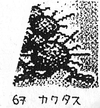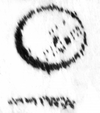Prerelease:Pokémon Red and Blue/Mid Development
This is a sub-page of Prerelease:Pokémon Red and Blue.
Contents
New Game Design Sprites
| To do: Add visual comparison to the Capsule Monster spritesheet, splitting up the sprites if need be. |
| Early Sprites | Reconstructions |
|---|---|
On the cover of Game Freak's December 1995 book New Game Design are a multitude of some of the earliest overworld sprites for Red and Green, appearing to predate even the spritesheet shown in the Capsule Monster project pitch. The sprites included on the cover will be described below, and directly compared to the Capsule Monster spritesheet:
- The player character. All the sprites here are rougher, especially the side and back ones. Like with the other characters shown on this cover, no back walking and side walking sprites were shown.
- The little boy NPC. His outfit has an outline that was later removed, and his head/hair were changed slightly, most noticeably making the side sprite's head rounder. This spriteset is also shifted one pixel higher here.
- The player's mother. All her sprites are rougher, with her dress lacking detailing. The front sprites also have extra highlights here.
- Professor Oak. The front and back sprites both lack some highlights, with the latter also missing some of its detailing. The side sprite, meanwhile, was essentially completely redrawn. The lack of a walking animation suggests that maybe at this point in development Professor Oak didn't have any yet.
- The scrapped cat. The front sprites are identical to what is seen in the design doc. The side sprite is more horizontally squished and lacks spots, while the back sprite has a slightly less refined head and neck.
- The "monster" and masked character are both slimmer, with the former also being less refined, namely lacking claws.
Alongside the character graphics were a collection of rather peculiar sprites, some likely objects, others clearly tiles. While most bear little to no resemblance to what can be seen in the final games, their purpose may have been for the artists to test out an artstyle. The sprites are as follows:
- What appears to be a walrus, and what looks like an earwig. Lapras is the only clearly water-borne Pokémon that had been conceived by then, and it's unknown if Slowbro was originally intended to be an amphibious Pokémon. As for bugs, they are surprisingly rare in the original lineup, with Pinsir being the only clearly insectoid one and Scyther's original design not exactly being that bug-like. As such, it's unknown what these two sprites were intended for.
- A large flower as well as an equally-imposing mushroom, both standard flora. Mushrooms don't appear in the final games, and while flowers do, they only exist as small animated tiles.
- A large key, as well as a chest. Typical RPG elements, which in the final games where replaced with items hidden inside Poké Balls.
- A steaming mug, coffee perhaps. May have been intended as interior decoration.
- A telephone. Interesting, as telephones actually play a gameplay role in Mother, with Gold and Silver later including a similar mechanic with the Pokégear. Telephones do appear in the final game, in the Celadon City Department Store, thought they are purely decorative tiles.
- What appears to be a purse, as well as a large tennis ball. Again, likely originally just decoration.
- A bamboo shoot, of which none exist in the final games. Likely some greenery to decorate for the overworld.
- The remainder of the sprites appear to be tiles, overworld tiles to be exact. Included here are a large rock, what appears to be rubble, gravely ground, wavy water, and a wiry pine tree.
- The rest is composed of standard building elements: a set of stairs, light and dark tiled roofs, a brick wall, and lastly an "Inn" sign very reminiscent of the ones from Makai Toushi SaGa. The "Inn" is an element that was ultimately replaced with Pokémon Centers.
New Year Postcard
In 1993, as was a yearly routine at the time, Game Freak published a new year's postcard, which here just so happens to feature early artwork of Exeggutor and Kangaskhan.[1]
Exeggutor is potentially an early attempt at a design revision, though ultimately its subsequent artwork was but a more refined take on its sprite, even sharing the same pose (as is already the case here, funnily enough). Kangaskhan, meanwhile, is actually more directly based on its sprite, as its promotional artwork depicts it with a refined design for its toes (which would only be reflected in-game starting in Generation III). Meanwhile, the space under its pouch being cream instead of brown is something lifted from Kangaskhan's early sprite, though it actually made it to the anime, and later to mainline games, first inconsistently in Generation III, and then consistently starting with HeartGold and SoulSilver.
Popularity Poll
Released in 2018, the manga Satoshi Tajiri: The Man Who Made Pokémon is notable due to its inclusion in a few panels of actual images from one of the popularity polls which happened during development of Red and Green. These polls were held periodically as to assure everyone was satisfied with the Pokémon designs that were being created, with the members of Game Freak being able to make suggestions and send feedback. The poll shown here appears to have been held in very late 1992 or early 1993.
| Pokémon | Early | Final | Notes |
|---|---|---|---|
| Monjara (モンジャラ) | 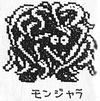
|
Tangela. Identical to the final aside from some extra highlights on its left foot and some slightly less refined vines here and there. | |
| Omega (オメガ) | 
|
/ | A scrapped robot Pokémon which could be seen clearly in the Capumon project pitch. From what little can be seen, it appears to not have received any significant design revision. It is visibly crossed out with an X, meaning it was already pretty much a goner by this point. Its index spot was later overwritten by Mew. |
| Nidoran♂ (ニドラン♂) | 
|
Has a larger sprite, a trait shared by a lot of other Pokémon here, with them later being scaled down once they received an evolution. Pretty much identical to the final, aside from the inside of the ears being completely black. | |
| Biriridama (ビリリダマ) | 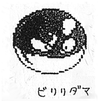
|
Voltorb. Has a larger sprite. Pretty much identical to the final, aside from the slightly touched-up facial expression. | |
| Gyaōn (ギャオーン) | 
|
/ | A later iteration of Gyarth, a scrapped Pokémon seen in the Capumon project pitch. It is seen here with a more refined sprite, giving it a fiercer look. It also appears to have been renamed at the last minute, as the katakana ス (su) is crossed out and a new end for the name is added. This new name, Gyaōn, is funnily enough derived from the onomatopoeia for Godzilla's roar. |
| Betobetaa (ベトベター) | 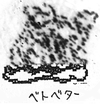
|
Grimer. Has a larger sprite. Pretty much identical to the final, aside from some repositioned arms. | |
| Omuomu (オムオム) | 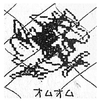
|
Spearow, seen here with an earlier name. Has a larger sprite. Pretty much identical to the final, aside from its eye, which here has a noticeably smaller pupil. Interestingly, it seems it was crossed out, which is odd considering it appears in the final. | |
| Gagarth (ガガース) | 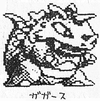
|
Rhydon. Identical to the final, aside from having a normal horn instead of a drill. Its name is also different, being Gagarth (ガガース) instead of Sidon (サイドン). | |
| Lucky (ラッキー ) | 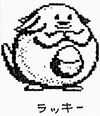
|
Chansey. Identical to the final, aside from having slightly different arms and different shading on its egg pouch. | |
| Ebiwara (エビワラー) | 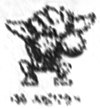
|
Hitmonchan. Sprite is mostly the same, though the left boxing glove lacks its exaggerated perspective. | |
| Deer (ディアー) | / | A scrapped deer/moose-like Pokémon which is named after the English word "Deer". It is listed as "needing improvements", meaning that the team likely already wasn't satisfied with the design at the time the poll was held. Its back sprite was later found in leaked assets. Corresponds to MissingNo. index number 56 in the final games. | |
| Mankey (マンキー) | 
|
Identical to the final, aside from having a larger sprite. | |
| Pauwau (パウワウ) | A really unrefined early design for Seel, depicted as a brutish shaggy leopard seal instead of a smooth pearly white one. Its pose is very similar, albeit proportionally different due to its completely different design. Is unsurprisingly listed as "needing improvements". | ||
| Diguda (ディグダ) | 
|
Diglett. Identical to the final, aside from having a larger sprite. | |
| (unknown) | / | A scrapped bipedal elephant-like Pokémon with two pairs of tusks. Its name is sadly virtually entirely obscured, with the only visible character being either コ or ロ ("Ko" and "Ro" respectively). It is listed as "needing improvements", meaning that the team likely already wasn't satisfied with the design at the time the poll was held. Its back sprite was later found in leaked assets. Corresponds to MissingNo. index number 61 in the final games. | |
| Crocky (クロッキー) | / | A scrapped crazed-looking crocodile Pokémon. It is listed as "needing improvements", meaning that the team likely already wasn't satisfied with the design at the time the poll was held. Its back sprite was later found in leaked assets, though this appears to be a slightly later design, as the "disheveled hair" is instead two spikes on either side of the Pokémon's head. Corresponds to MissingNo. index number 62 in the final games. | |
| Konpan (コンパン) | 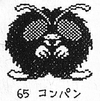
|
Venonat. Identical to the final, aside from having a larger sprite which notably has more curled up feet. | |
| Cactus (カクタス) | / | A scrapped mean-looking cactus Pokémon with a tail which is named after the English word "Cactus". It is listed as basically being a "good design", though it ultimately never made the cut. Its back sprite was later found in leaked assets. Corresponds to MissingNo. index number 67 in the final games. | |
| Jagg (ジャッグ) | / | A scrapped shark/harpoon-like Pokémon whose name appears to be a pun on "jagged" and the English word "Shark" (シャーク). Its back sprite was later found in leaked assets. Corresponds to MissingNo. index number 68 in the final games. | |
| (unknown) | 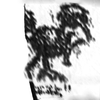
|
Doduo. Has a much larger sprite, as well as what appears to be a meaner stare and a single tail feather. In contrast, in the final games, Doduo is a much gentler Pokémon, and the fierce look and tail feathers were elements later given to Dodrio, its evolution. Its name is also completely different, and while sadly almost unreadable, what looks like "トリ" (bird) can be made out. | |
| Rougela (ルージュラ) | 
|
Jynx. Pretty much identical to the final, aside from having a more symmetrical body. | |
| (unknown) | 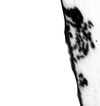
|
Its name isn't shown, but this is clearly Meowth. Has a much larger sprite, as well as what appears to be differently-shaped arms and ears with with more black on them. | |
| Onicrab (オニクラブ) | 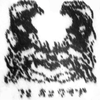
|
Krabby, which here is known under the cooler name "Onicrab" as opposed to the final game's "Crab". Moreover, not only is Krabby larger, it also shares a bigger body and more rugged claws, both traits which were later clearly handed out to Kingler, its evolution. | |
| Balloonda (バルンダ) | / | A scrapped balloon-like Pokémon whose name appears to be a pun on the English word "Balloon". Its back sprite was later found in leaked assets, revealing it even came with a string, which here cannot be seen due to the low quality of the scan. Interestingly, the poll's result sheet lists this Pokémon as "Balloonda (A)", meaning that it's possible two designs for this Pokémon were showcased. Corresponds to MissingNo. index number 50 in the final games. |
In addition to early sprites, a handful of Pokémon are also seen using different names:
- Blastoise is still known as Karabajio (カラバジオ), as seen in the Capumon project pitch.
- Nidoking is known as Maikō♂ (マイコー♂) suggesting that it, and likely Nidoqueen, were to retain their first forms' gender symbols. The similar naming process makes even more sense when you consider that both Nidorino and Nidorina still were far from being conceived just yet.
- Pinsir is seemingly called Yairos (ヤイロス) instead of Kairos (カイロス).
- Ghastly is known as Ghost (ゴースト), Haunter's final Japanese name. This is odd as it used its final name, Ghos (ゴース), in the Capumon pitch.
- Mr. Mime is known as Baririina (バリリーナ) instead of Barrierd (バリヤード). Interestingly, this exact same name was later repurposed for the ultimately scrapped Mr. Mime pre-evolution from the Spaceworld '97 build of Gold and Silver.
- While not shown, a Pokémon listed as "Fungus" (ファンガス) can be seen in the poll, the comment associated with it stating that it looks like a hermit crab. This is definitely an earlier name for Parasect, which is known as Parasect (パラセクト) in the final games.
- Psyduck is known as Ducky (ダッキー) as opposed to Koduck (コダック).
- Drowzee is known as Sleeper (スリーパー) as opposed to Sleep (スリープ). This name was later repurposed for Hypno, Drowzee's evolution.
- Magneton is known as Coil (コイル) as opposed to Rarecoil (レアコイル). This name was later repurposed for Magnemite, Magneton's pre-evolution.
- Farfetchd is known as Okupan (オクパーン) instead of Kamonegi (カモネギ).
Storyboards
A handful of storyboards circa 1993 which, while very close to final, still display a handful of differences here and there.
Opening Cutscene
The copyright dates are missing, and so are the mentions of Creatures Inc. and Game Freak Inc. below Nintendo. The "Game Freak presents" screen also lacks its black bars on the top and bottom, the company logo is absent, and there are no mentions of the shooting star animation.
The remainder of the storyboards is identical to final, with the only change being in the board, which states that originally Nidorino was to let out a roar as it jumps at Gengar, something missing entirely in the final cutscene.
Catching Pokémon
In the final games, Poké Balls do not hang in the air when thrown, instead always landing on the ground. The final games' smoke effect has two extra frames of animation when compared to what is described here. The player's back sprite is also shown instead of the Pokémon one, though this is more than likely a simple stylistic choice.
Regarding the Pokémon being caught, it is named "Kabiin" (カビーン) and appears to simply be a Jigglypuff with the face of Kōji Nishino. Indeed, Jigglypuff is known as "Purin" (プリン), and Nishino was nicknamed Kirby (カービィ Kābī) by other developers because of his large appetite. It's possible this humorous placeholder design inspired Snorlax (known as "Kabigon" in Japanese), a Pokémon based on Nishino that was created some time after Jigglypuff.
Trading Pokémon
In the final games, the Pokémon and its name/dex number slide on-screen rather than simply appearing, the details were added in a text box which also added the ID number and OT name. The sound for when the Pokémon appears was changed from a "Bwoop" to the cry of the Pokémon, and one for the cable moving went from "Vrrr" to "Bwoop". Regarding the transfer cable, it actually moves toward the Ball instead of vice-versa, the ball rolling replaced with it shaking, and the "stretched" animation was eventually added. Interestingly, the bit where the Pokémon gets back into its Poké Ball is listed as reusing the animation used when you catch a Pokémon, though in the final games this is technically untrue, as the last two frames aren't included. However, the previous storyboard, which discusses catching Pokémon, shows the exact same animation as the one pictured in the final release, meaning that the final games' trading animation features an earlier version of the catching animation.
During the transfer, text boxes with the two Trainer names were added, the duration was significantly increased from the listed "One (1) second", and the horizontal lines on the cable were changed to vertical ones. When receiving the Pokémon, in the final games the pipe is already on-screen, in the middle too instead of the side, rendering the Ball roll also being scrapped. The "Bwoop" was once again swapped with the cry of the Pokémon. The menu is also completely different, as here it states "Trade Complete" with the options "Continue Trading" or "Return to Title", while in the final games you can keep trading as soon as the trade is over. A scrapped feature is also listed on the side, one which states you could send the messages "Please take care of it" and "It's so hard to give this one up" by pressing the A and B buttons respectively.
Regarding the two Pokémon being traded, they are known as "Buhii" (ブヒー) and "Papyoo" (パピョー) respectively. Much like Kabiin before them, they are two simple placeholder designs for mammalian and insectoid Pokémon.
Game Freak 1997 Interview
A few early Pokémon sprites were also revealed in an interview which took place in December 1997, which used to be hosted on Game Freak's official website. As seen by the selection of Pokémon shown, it appears these sprites date back to 1993-94, when these Pokémon where first conceived.
Weedle Line
| Game Freak Interview | Final Game |
|---|---|

|
An early look at the Weedle line. Here, Weedle appears as a rather chubby smooth grub rather than a thin worm with a segmented body, its iconic head spike nowhere to be seen, in its place some sort of bowler hat-like orb. The tail stinger is also missing, and two "cheek stickers" can be seen under Weedle's eyes, something never seen in the final design. Also worth noting is Weedle's early name, with it being known as コカーナ (Kokana) rather than the final ビードル (Beedle)
The following Pokémon is Kakuna's predecessor. Known as カサナギー (Kasanagi), it appears to be some sort of pupa with a segmented torso, two gloved hands, curly moustaches, the same "bowler hat" as the one seen on Weedle's early design, as well as a "mouth" similar to Weedle's. The last Pokémon, meanwhile, is completely different from Beedrill. This one appears to be an angry-looking anthropomorphic cockroach/beetle with four large gloved hands balled into fists. This Pokémon was apparently scrapped before having been given a name as it is referred to as 名歩不明 (Unknown name) in the image caption. The interview actually sheds some light as to why this design was shelved, with designer Atsudo Nishida revealing that they weren't satisfied with the design, hence its replacement with Beedrill.
Poliwag Line
| Game Freak Interview | Final Games |
|---|---|

|
An early version of the Poliwag line. Here, Poliwag appears to have been larger overall, at about Poliwhirl's height, with longer and more defined feet, a thicker belly spiral, a missing mouth, and a naked droopy tail as opposed to the final design's tadpole tail. Poliwhirl, meanwhile, is virtually unchanged aside from a wider body, longer gloves, more defined shoes and eyes, as well as having a different name, with it being ニョロッピ (Nyoroppi) instead of ニョロゾ (Nyorozo).
The last Pokémon, meanwhile, features some interesting differences when compared to Poliwrath's final design. This design shows Poliwrath as a satisfied-looking fat frog with long gloves, "shoe feet" with defined soles, a small triangular mouth, and most noticeably a small crown sitting on its head. It is also shown here with an earlier name, with it being ニョースカ (Nyosuka) instead of ニョロボン (Nyorobon). The interview once again sheds some light as to why this design was retooled, with designer Atsudo Nishida remarking that Nyosuka didn't look very strong, and as such that player might have felt disappointed to have spent so much time training a Pokémon which in the end doesn't even look that fierce. Interestingly, the idea of the crown might have went on to inspire the King's Rock item introduced in Gold and Silver, which allows Poliwhirl to evolve into Politoed when traded while holding the item.
Dragonair
| Game Freak Interview | Final Games |
|---|---|
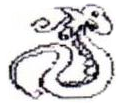
|
The last design revealed in the interview, this one an early iteration of Dragonair. This design namely lacks the head horn as well as the neck and tail pearls, and also has more jagged fin-like ears as opposed to ones akin to angel wings. Also seen here are whiskers and a dorsal ridge, elements missing from the final design which may have originally been intended to breach the gap between Dragonair and Dragonite, the latter's dorsal ridge later ending up disappearing after Generation I interestingly enough. Regarding this design, the interview refers to it as one which in the final game was made slicker and more appealing.






